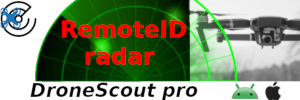As a new pilot I want to make sure I have a clear understanding of the rules and regulations of flying and permissible air space. At this moment things are unclear, but there (in the US) is a commission, the ULC- Uniform Laws Commission, which has a draft of drone laws, which seem to make sense and provide clarity. I thought it might be useful to post part of the text of the article I found pertaining to the proposition. Does anyone know the status of the proposed draft?
Here's a link to the article...
Drone law drafts
Here are some of the details of the proposed law.
SECTION 5: AIRSPACE INTRUSIONS.
(a) An aerial trespass occurs when a person intentionally and without consent of the landowner operates an unmanned aircraft in the airspace over the landowner’s property and by so doing causes substantial interference with the use and enjoyment of the property.
(b) The determination of whether an unmanned aircraft’s operation over property has caused substantial interference with the use and enjoyment of property shall be based upon a review of the totality of the circumstances, including:
(1) The amount of time the unmanned aircraft was operated over the landowner’s property;
(2) The altitude at which the unmanned aircraft was operating;
(3) The number of times unmanned aircraft have been operated over the property;
(4) Whether the unmanned aircraft recorded or captured audio, video or photographs while in operation over the property;
(5) Whether the landowner has regularly allowed operation of unmanned aircraft over the property;
(6) Whether the operation of the unmanned aircraft caused physical damage to persons or property;
(7) Whether the operation of the unmanned aircraft caused economic damage;
(8) The time of day the unmanned aircraft was operated over the landowner’s property;
(9) Whether an individual on the land saw or heard the unmanned aircraft while it was over the property; and,
(10) The operator’s purpose in operating the unmanned aircraft over the property.
(c) Repeated or continual operation of an unmanned aircraft over a landowner’s property shall not give rise to prescriptive rights in the airspace
Definition of “Intrusions on Land”:
SECTION 6: INTRUSIONS ON LAND.
(a) Except as provided in subsection (b), a person who, without permission, intentionally lands an unmanned aircraft on the land of another, or who intentionally causes an unmanned aircraft to come into physical contact with a structure, plant life, or individual on the land of another, commits a trespass to land.
(b) A trespass to land does not occur under subsection (a) when:
(1) the unmanned aircraft operator is forced to land the unmanned aircraft because of unexpected circumstances that reasonably justify such a landing; or,
(2) the unmanned aircraft malfunctions or otherwise touches down upon the surface of the land because of weather or other factors beyond the operator’s control.
(c) A person asserting the privileges provided in subsection (b) is liable for any damage caused by the unmanned aircraft’s operation.
(d) Regardless of how an unmanned aircraft came to rest upon the property of another, the owner or operator of the unmanned aircraft has a right to recover the unmanned aircraft upon a request to the owner of such property. A landowner shall not unreasonably refuse a request to return the unmanned aircraft or to permit the unmanned aircraft’s operator to recover the unmanned aircraft from the property.
Definition of “Violations of Privacy”:
SECTION 8: UNMANNED AIRCRAFT AND VIOLATIONS OF PRIVACY.
(a) Privacy related civil actions may be based upon the operation of an unmanned aircraft.
(b) A determination of whether an unmanned aircraft’s operation over property was used to violate a privacy-related right shall be based upon a review of the totality of the circumstances, including:
(1) Whether by hovering or repeated flights the unmanned aircraft was likely to have provided the operator with the opportunity to use the unmanned aircraft to view, listen to, record or capture by camera, microphone or other device, individuals who were present at that place and time; and,
(2) Whether the operator made statements or took other overt actions indicating a desire to use an unmanned aircraft to infringe upon rights of privacy recognized in this state.
Here's a link to the article...
Drone law drafts
Here are some of the details of the proposed law.
SECTION 5: AIRSPACE INTRUSIONS.
(a) An aerial trespass occurs when a person intentionally and without consent of the landowner operates an unmanned aircraft in the airspace over the landowner’s property and by so doing causes substantial interference with the use and enjoyment of the property.
(b) The determination of whether an unmanned aircraft’s operation over property has caused substantial interference with the use and enjoyment of property shall be based upon a review of the totality of the circumstances, including:
(1) The amount of time the unmanned aircraft was operated over the landowner’s property;
(2) The altitude at which the unmanned aircraft was operating;
(3) The number of times unmanned aircraft have been operated over the property;
(4) Whether the unmanned aircraft recorded or captured audio, video or photographs while in operation over the property;
(5) Whether the landowner has regularly allowed operation of unmanned aircraft over the property;
(6) Whether the operation of the unmanned aircraft caused physical damage to persons or property;
(7) Whether the operation of the unmanned aircraft caused economic damage;
(8) The time of day the unmanned aircraft was operated over the landowner’s property;
(9) Whether an individual on the land saw or heard the unmanned aircraft while it was over the property; and,
(10) The operator’s purpose in operating the unmanned aircraft over the property.
(c) Repeated or continual operation of an unmanned aircraft over a landowner’s property shall not give rise to prescriptive rights in the airspace
Definition of “Intrusions on Land”:
SECTION 6: INTRUSIONS ON LAND.
(a) Except as provided in subsection (b), a person who, without permission, intentionally lands an unmanned aircraft on the land of another, or who intentionally causes an unmanned aircraft to come into physical contact with a structure, plant life, or individual on the land of another, commits a trespass to land.
(b) A trespass to land does not occur under subsection (a) when:
(1) the unmanned aircraft operator is forced to land the unmanned aircraft because of unexpected circumstances that reasonably justify such a landing; or,
(2) the unmanned aircraft malfunctions or otherwise touches down upon the surface of the land because of weather or other factors beyond the operator’s control.
(c) A person asserting the privileges provided in subsection (b) is liable for any damage caused by the unmanned aircraft’s operation.
(d) Regardless of how an unmanned aircraft came to rest upon the property of another, the owner or operator of the unmanned aircraft has a right to recover the unmanned aircraft upon a request to the owner of such property. A landowner shall not unreasonably refuse a request to return the unmanned aircraft or to permit the unmanned aircraft’s operator to recover the unmanned aircraft from the property.
Definition of “Violations of Privacy”:
SECTION 8: UNMANNED AIRCRAFT AND VIOLATIONS OF PRIVACY.
(a) Privacy related civil actions may be based upon the operation of an unmanned aircraft.
(b) A determination of whether an unmanned aircraft’s operation over property was used to violate a privacy-related right shall be based upon a review of the totality of the circumstances, including:
(1) Whether by hovering or repeated flights the unmanned aircraft was likely to have provided the operator with the opportunity to use the unmanned aircraft to view, listen to, record or capture by camera, microphone or other device, individuals who were present at that place and time; and,
(2) Whether the operator made statements or took other overt actions indicating a desire to use an unmanned aircraft to infringe upon rights of privacy recognized in this state.










